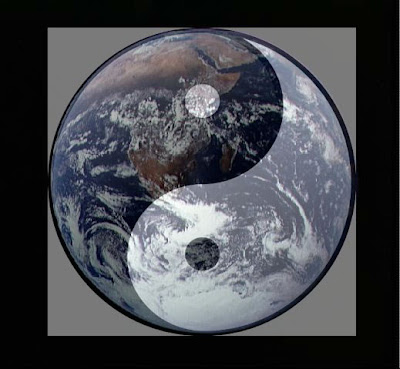In any type of system (artificial, conceptual, mental, living, natural) given a state variable or process, or the input-output relationship, its variation will always be limited in terms of another variable on which it depends. In other words, no system variable or process may tend to infinity indefinitely.A typical example is the output/input relation of the type:
In Part I it was assumed that the system is linear, if not you can always return to a linear graph by transforming the output axis, for example if the variable is exponential returns to the logarithm of the variable. At the beginning of Part II the output variable goes into a situation of saturation, where it loses linearity and becomes sub-linear. In Part III, for high values of input, the output undergoes oscillations until the destruction of the system.
In the words of Bateson:
THERE ARE NO MONOTONE "VALUES" IN BIOLOGY
A monotone value is one that either only increases or only decreases. Its curves has no kinks; that is, its curve never changes from increase to decrease or vice versa. Desired substances, things, patterns, or sequences of experience that are in some sense "good" for the organism - items of diet, conditions of life, temperature, entertainment, sex, and so forth - are never such that more of the something is always better than less of the something. Rather, for all objects and experiences, there is a quantity that has optimum value. Above that quantity, the variable becomes toxic. To fall below that value is to be deprived.
This characteristic of biological value does not hold for money. Money is always transitively valued. More money is supposedly always better than less money. Fore example, $1001 is to be preferred to $1000. But this is not so for biological values. More calcium is not always better than less calcium. There is an optimum quantity of calcium that a given organism may need in its diet. Beyond this, calcium becomes toxic. Similarly, for oxygen that we breathe or food or components of diet and probably all components of relationship, enough is better than a feast. We can even have too much
psychotherapy. A relationship with no combat in it is dull, and a relationship with too much combat in it is toxic. What is desirable is a relationship with a certain optimum of conflict. It is even possible that when we consider money, not by itself, but as acting on human beings who own it, we may find that money, too, becomes toxic beyond a certain point. In any case, the philosophy of money, the set of presuppositions by which money is supposedly better and better the more you have of it, is totally antibiological. It seems, nevertheless, that this philosophy can be taught to living things.














































